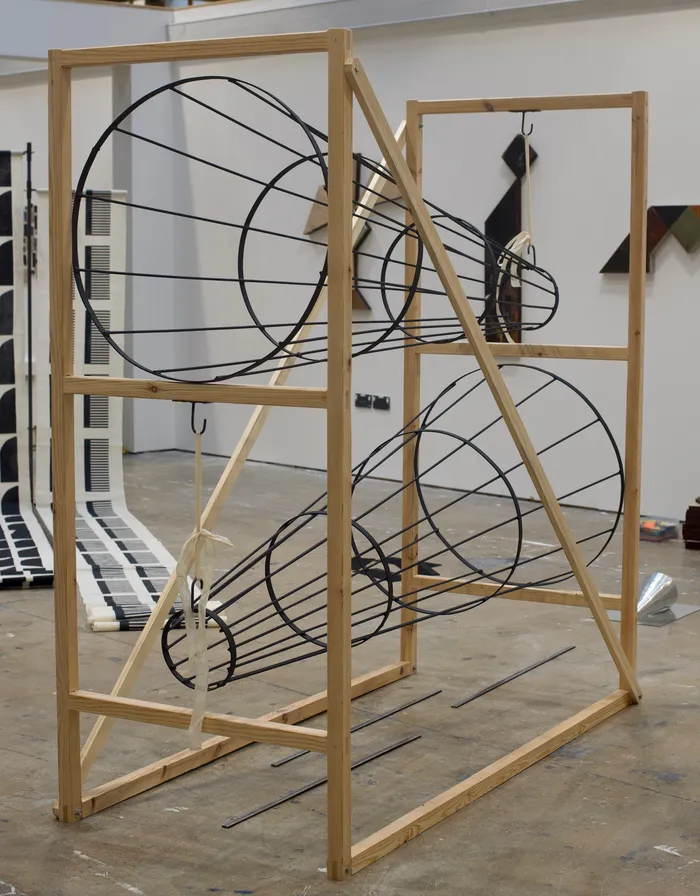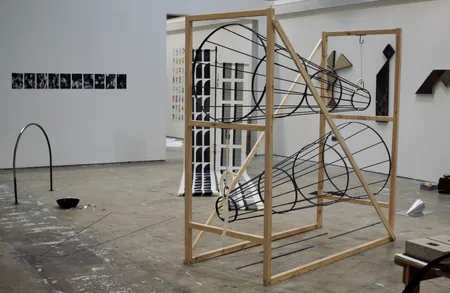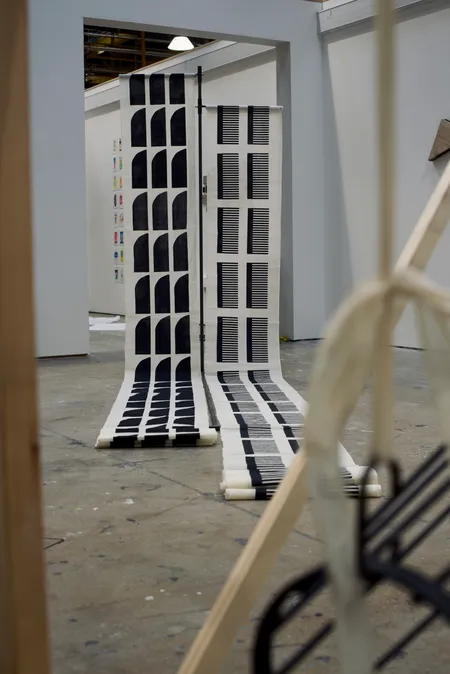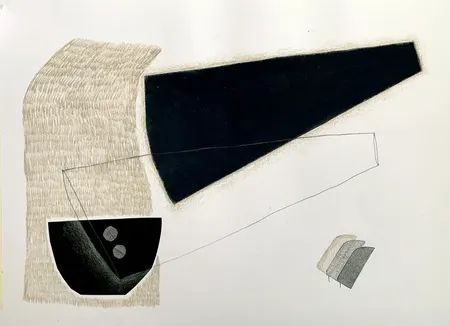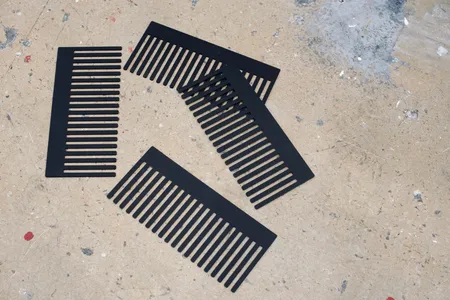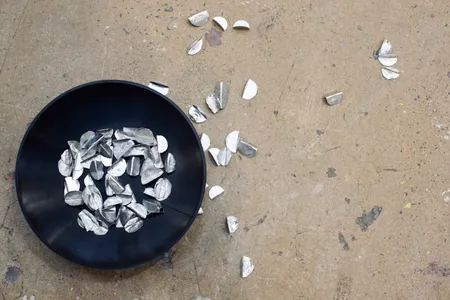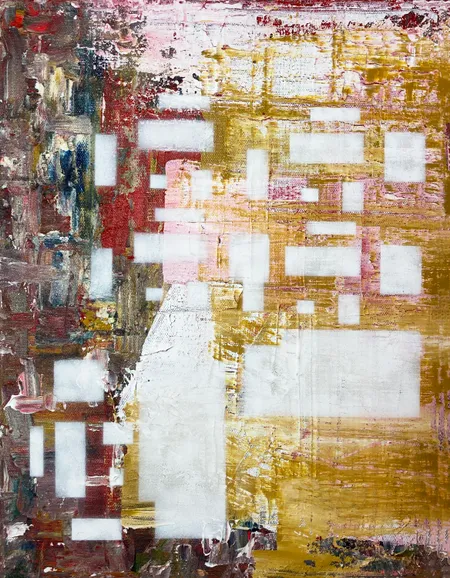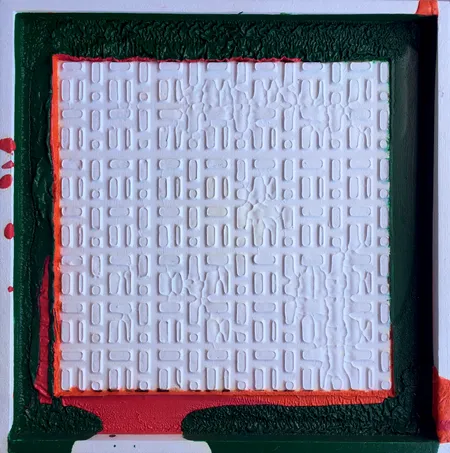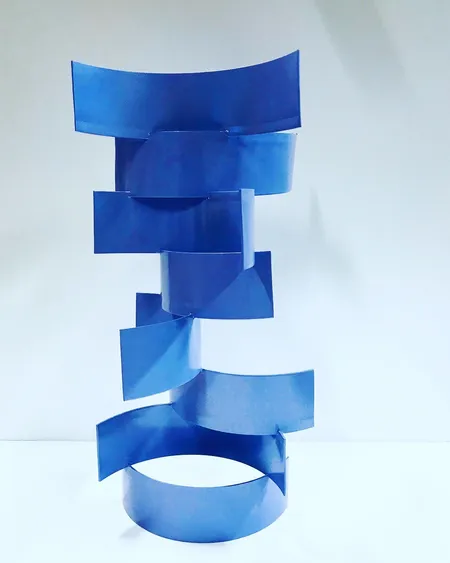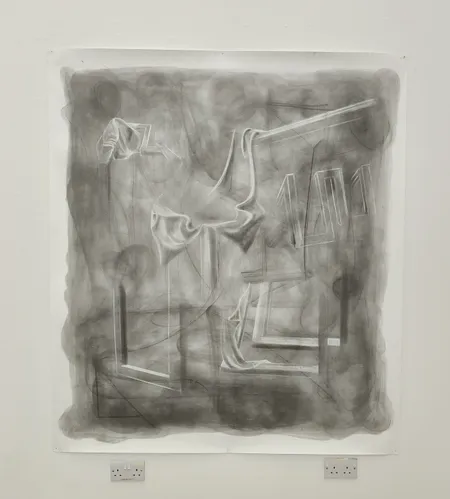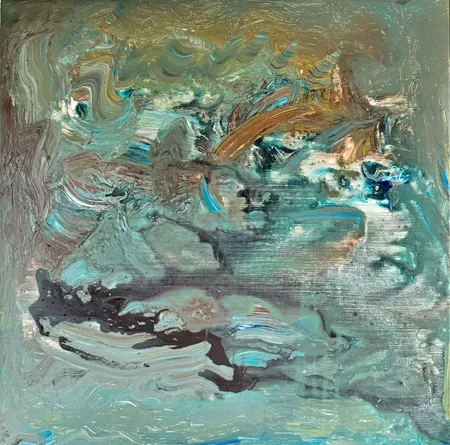Putchers
Elizabeth Helder189 x 195 cm | 74 x 76 in
Subject: Abstract
Tags: Construction, Structure, Deconstruction, Futurism
Original sculpture in steel, wood and calico, (freestanding).
For artworks of larger scale, shipping costs will be calculated at checkout based on the price of the sold work. Due to the size of this piece, final shipping arrangements and costs will be confirmed after the sale is processed. Alternatively, collection from the artist's studio can be arranged. Please contact the gallery to discuss these options further.
delivered to your door from £23.50
Elizabeth Helder
Elizabeth Helder's "Forms Through Time" is a sophisticated exploration that integrates various artistic movements while establishing her unique voice. Her sculptures and collages deconstruct and reassemble familiar everyday objects like combs, coins, knives, bowls, and mirrors, challenging conventional perspectives through techniques reminiscent of Cubist fragmentation and geometric abstraction.
Helder's approach engages deeply with the materiality of objects and their historical significance. By folding and denting coins, she symbolizes society's transition to a cashless world, marking the end of an era for physical currency. This act of transformation echoes the Futurist fascination with technological progress and industrialization, yet Helder's work hints at a reverence for the past. Her juxtaposition of handcrafted qualities with industrial elements reflects the shift from singular, handmade items to mass-produced objects, creating a nuanced dialogue that transcends time.
In her two-dimensional collage works, Helder analyses objects by breaking them down into basic shapes and repeating these forms, a process that aligns with Cubist practices. This method allows her to explore the essential nature of everyday items, questioning why they need to be replaced if they have changed so little over time. Helder's work invites viewers to contemplate the historical and future significance of these objects, emphasising their essential nature and the ease with which they are deemed replaceable.
Helder's sophisticated blend of Cubist and Futurist principles, combined with her unique perspective, creates a poignant reflection on what endures and what is lost in our pursuit of progress. Her work draws intriguing parallels with contemporary artists like Rachel Whiteread and Simon Starling, who also engage with the materiality of objects to explore broader themes of change and continuity.
Whiteread's exploration of the materiality of objects and their historical significance is evident in Helder's approach. Whiteread's casts of negative spaces uncover hidden histories, much like Helder's work hints at the enduring value of everyday items amidst technological advancements. Similarly, Simon Starling's practice of material metamorphosis, where objects are recontextualized to reveal new narratives, resonates with Helder's transformation of coins to symbolise societal shifts.
Elizabeth Helder's "Forms Through Time" is a captivating body of work that integrates various artistic influences, allowing viewers to make their own reflections on the evolving nature of everyday objects. Her sophisticated approach honors the past while engaging with the future, making her a distinct and compelling voice in contemporary art.
